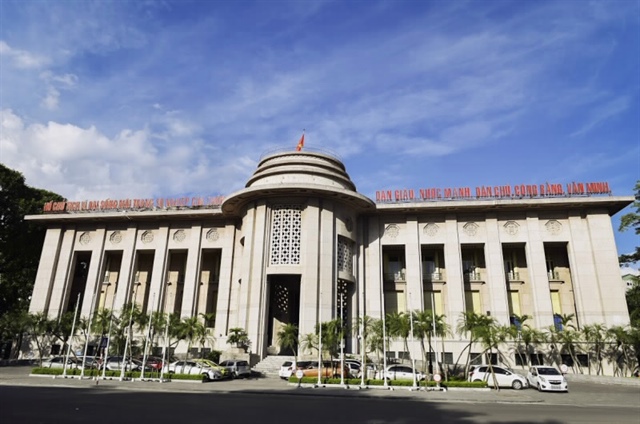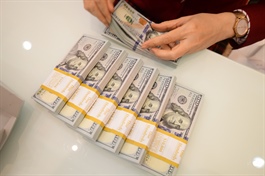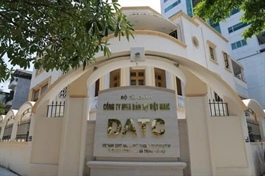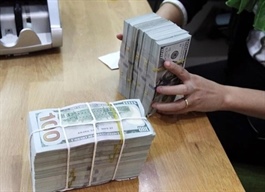Vietnam’s c.bank sells USD to stabilize exchange rate
Vietnam’s c.bank sells USD to stabilize exchange rate
The move is aimed at alleviating market concerns, increasing foreign exchange supply, and ensuring smooth liquidity.
The State Bank of Vietnam (SBV) has begun selling USD to banks with negative foreign exchange balances at a rate of VND25,450 VND, which is VND23 lower than the ceiling rate.

The State Bank of Vietnam. Source: SBV |
Pham Chi Quang, General Director of the SBV's Monetary Policy Department, revealed the information at the central bank’s press briefing held today [April 19].
The SBV's intervention to sell hard currency is aimed at countering the sharp increase in the exchange rate, which has by over 5% since the beginning of the year.
According to Quang, eligible banks include those with negative foreign exchange balances and a demand for foreign exchange. The maximum sale to each bank is equivalent to the amount needed to rebalance their foreign exchange holdings.
"This is a strong intervention measure, aimed at alleviating market concerns, increasing foreign exchange supply, and ensuring smooth liquidity," Quang stated.
The foreign currency balance is determined based on the balance of accounts for buying and selling (spot, forward, options), arising from transactions in foreign exchange.
The SBV's intervention selling rate today is VND25,450 per USD, which is the selling rate listed at the SBV's Exchange Transaction Office. This rate is VND23 lower than today's ceiling rate of VND25,473.
At a Government press conference in early April, SBV’s Deputy Governor Dao Minh Tu stated that by the end of last year, Vietnam's foreign exchange reserves stood at around US$100 billion. In recent days, the exchange rate has consistently hit new highs. Vietcombank listed its buying rate at VND25,133 VND and its selling rate at VND25,473, which is the upper limit.. Compared to the beginning of the year, the exchange rate has increased by over 5%.
Quang noted the rapid increase in exchange rates is due to both international market factors and domestic demand. Globally, the USD index (DXY) has returned to the 106 level for the first time in six months. This is attributed to high inflation in the US, which could lead the Federal Reserve to delay its decision to cut interest rates, contrary to investor expectations.
Domestically, there is a high demand for foreign currency, especially from businesses, such as those importing steel and iron. Businesses are hedging risks by purchasing more foreign exchange in advance, which shifts future demand into the present.
Speaking at an investor conference last weekend, an expert from Dragon Capital stated that the pressure on the exchange rate is due to the interest rate differential between the VND and the USD, which is currently negative, as well as fluctuations in the gold market and the rise of digital currencies.
Despite significant fluctuations, Dragon Capital's data shows that the VND is depreciating at a slower rate than many other regional currencies. Since the beginning of the year, the VND has depreciated at a lower rate than the Thai baht (7.5%), South Korean won (8.3%), and Japanese yen (9.4%).
On the regulatory side, the SBV is closely monitoring exchange rate developments to take measures to alleviate market pressures. One approach includes neutralizing the excess VND supply in the interbank market by issuing treasury bills, thereby reducing pressure on the exchange rate.
According to SSI Research, the outstanding volume of treasury bills as of last weekend was VND123 trillion ($4.83 billion). Last week, liquidity pressures prompted the SBV to inject a net amount of VND25.25 trillion ($992 million) worth of treasury bills into the market at a higher interest rate (3.5%) on a total of VND75 trillion ($2.94 billion) maturing.



























